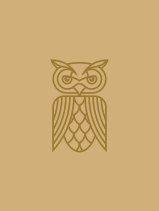1.035.516
kiadvánnyal nyújtjuk Magyarország legnagyobb antikvár könyv-kínálatát

VISSZA
A TETEJÉRE
JAVASLATOKÉszre-
vételek
Signal: Hitler's Wartime Picture Magazine
| Kiadó: | Prentice-Hall, Inc.-Bison Book |
|---|---|
| Kiadás helye: | Englewood Cliffs |
| Kiadás éve: | |
| Kötés típusa: | Varrott keménykötés |
| Oldalszám: | 190 oldal |
| Sorozatcím: | |
| Kötetszám: | |
| Nyelv: | Angol |
| Méret: | 30 cm x 23 cm |
| ISBN: | 0-13-810051-9 |
| Megjegyzés: | Fekete-fehér és színes fotókkal. |
naponta értesítjük a beérkező friss
kiadványokról
naponta értesítjük a beérkező friss
kiadványokról
Előszó
TovábbFülszöveg
SIGNAL was the most widely circulated magazine in Europe during the Second World War. Published under the auspices of the Wehr-macht and supervised by Goebbels' Ministry of Propaganda, Signal was distributed in twenty languages throughout occupied Europe between 1940 and 1945. Its circulation reached a high point of three million in 1943, most of it outside Germany. Signal was meant for the consumption of the peoples of occupied Europe to show them the excellent conditions of life in Germany and the power and might of German armed forces in Europe and North Africa. Its design and format have been copied by many European publications since the war, as its treatment of action photographs and its collection of color on the war and the home front in the Third Reich are incomparable. Signal is more than a social document. It is the Third Reich's view of itself. It represents the finest collection of photographs of the Second World War in Europe.
The pages from Signal which are shown... Tovább
Fülszöveg
SIGNAL was the most widely circulated magazine in Europe during the Second World War. Published under the auspices of the Wehr-macht and supervised by Goebbels' Ministry of Propaganda, Signal was distributed in twenty languages throughout occupied Europe between 1940 and 1945. Its circulation reached a high point of three million in 1943, most of it outside Germany. Signal was meant for the consumption of the peoples of occupied Europe to show them the excellent conditions of life in Germany and the power and might of German armed forces in Europe and North Africa. Its design and format have been copied by many European publications since the war, as its treatment of action photographs and its collection of color on the war and the home front in the Third Reich are incomparable. Signal is more than a social document. It is the Third Reich's view of itself. It represents the finest collection of photographs of the Second World War in Europe.
The pages from Signal which are shown here are taken from its English edition, produced originally for the United States and Ireland, but after the fall of France it was sold to readers in the Channel Islands of Jersey, Guernsey, Alderney and Sark which were occupied by the Wehrmacht after France was overrun. It was published in English in the years 1940-44, only stopping when its editorial office for the English and French editions was closed after the liberation of Paris in the summer of 1944. The articles initially stressed the invincibility of the Third Reich. Later they became more openly anti-American and anti-British, and as the tide of war began to turn against Hitler, they encouraged Occupied Europe to believe that Anglo-American liberation would be more cruel and barbarous than life under the Swastika. Whatever the readership thought sales remained extraordinarily high in 1943 and 1944, over 800,000 a fortnight in France alone and up to 20,000 in its English language edition.
Signal was more than Hitler's Wartime Picture Magazine. It is a living record of the force of Nazi propaganda in a most persuasive, colorful and highly illustrative format—the brutal face of life in the Third Reich and Germany at war. Vissza
Témakörök
- Idegennyelv > Idegennyelvű könyvek
- Művészetek > Rádió-TV-újságírás
- Idegennyelv > Idegennyelvű könyvek > Angol > Műszaki
- Idegennyelv > Idegennyelvű könyvek > Angol > Művészetek > Egyéb
- Idegennyelv > Idegennyelvű könyvek > Angol > Történelem > Európa története > Egyéb
- Történelem > Idegennyelvű > Angol
- Idegennyelv > Idegennyelvű könyvek > Angol
- Történelem > Kontinensek szerint > Európa, európai országok története > Nyugat-Európa > Németország
- Történelem > Legújabb kor > II. világháború > Hadtörténet
- Történelem > Politika > Ideológiák > Fasizmus
- Történelem > Hadtörténet > Hadügy, hadviselés
- Műszaki > Idegennyelv > Angol
- Műszaki > Hadászat, hadtörténet
Megvásárolható példányok
Nincs megvásárolható példány
A könyv összes megrendelhető példánya elfogyott. Ha kívánja, előjegyezheti a könyvet, és amint a könyv egy újabb példánya elérhető lesz, értesítjük.








